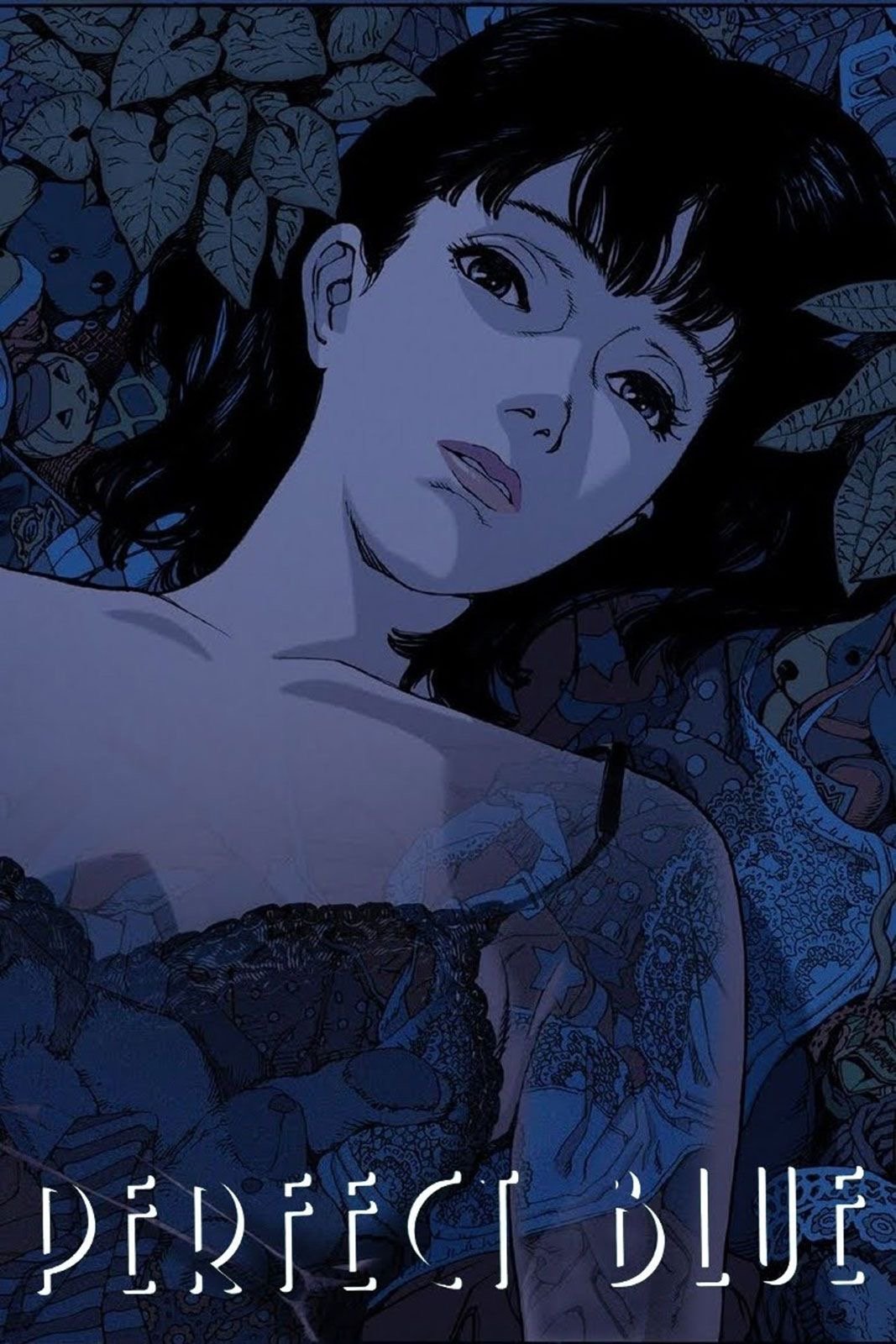Perfect Blue: A Counternarrative to the Male Gaze
Photo provided by Joshua Vaughan
Examining the male gaze and patriarchal pressures in Perfect Blue and the journey toward reclaiming identity and agency
Introduction:
Hello! I am Joshua, and welcome to my new series, “Narratives of Change!” In this series, I will explore how various forms of media — from film, music, and video games — serve as reflections and powerful counternarratives to societal perspectives. For my first installment, I will dive into the hauntingly brilliant film: Perfect Blue by Satoshi Kon, a Japanese animated movie following a former idol-star turned actress as she grapples with the pressures of patriarchy. I highly recommend experiencing the film yourself, but if you choose to read on, be warned: spoilers ahead!
The Male Gaze in Media:
The male gaze refers to how women are portrayed in media through a predominantly heterosexual, masculine perspective that objectifies them as sexual objects to be watched, possessed, and conquered. As mass media reinforces these ideologies through repeated exposure, they become normalized as societal norms. In this context, Perfect Blue serves as a powerful counter narrative, examining the dangers of the male gaze through Mima, the Stalker, Rumi, and the entertainment industry at large.
The film follows Mima, a former pop idol turned actress, as she navigates the pressures and expectations of the patriarchy. The Stalker, an obsessive fan, embodies the male gaze’s demand for a virginal, pure image, unable to accept Mima’s transformation into a woman with autonomy. In contrast, Rumi, a former pop idol turned manager, symbolizes the tragic consequences of internalizing patriarchal ideals—attempting to control Mima to preserve the version of herself society once valued. Both the stalker and Rumi personify damaging aspects of the male gaze.
The Stalker, The Industry, and The Virgin:
Mima, like many young female pop stars, is objectified through the lens of innocence. Her "virgin" image is critical to her popularity, especially among male fans who see themselves as the potential "special someone" in her life. The male desire to control a woman’s body positions her as a sexual object meant for consumption, with the added expectation that she must remain pure.
From the 1950s, when Hugh Hefner used an unsolicited nude photo of Marilyn Monroe for Playboy, to the modern-day harassment of K-pop idols by sasaeng (stalker) fans, there is a long history of controlling idols' images. When these stars deviate from their prescribed roles, violent consequences often follow. Björk’s tampered letter bombs are a stark example of how parasocial relationships can turn destructive when an idol’s image is threatened.
The Stalker in Perfect Blue embodies this obsessive male fan. His fixation on Mima’s purity is evident in the posters that cover his room, his role as a security guard, and his invasive website tracking her every move. As Mima sheds her virginal persona for more mature roles, the Stalker’s fantasy unravels. His obsession with preserving her purity drives him to violence, even murdering producers involved in her sexualized acting choices.
The Stalker’s fixation and the industry’s commodification of Mima’s body both reflect how patriarchal forces trap Mima within rigid, dehumanizing roles, leaving no space for her to reclaim her identity outside of these oppressive expectations.
The Tragic Aftermath of the Patriarchy:
Rumi’s character represents the tragic consequences of internalizing the patriarchal gaze. Once an idolized pop idol, Rumi’s career and identity were shaped by the industry’s pressure to maintain an image of youthful purity. As she ages and loses her youthful appearance, she struggles to reconcile with her fading relevance. Rather than embracing aging or personal growth, Rumi fixates on preserving Mima as a reflection of the idealized woman she once was.
Rumi’s obsession with Mima mirrors the tragic consequences of living in a patriarchal world. Her collaboration with the Stalker, both working to preserve Mima’s innocence, symbolizes how internalized forces can make women complicit in their own subjugation. By attempting to control Mima’s image, Rumi perpetuates the same patriarchal ideals that once oppressed her. Her fixation on Mima’s virginity underscores society’s relentless enforcement of restrictive ideals of womanhood, often turning women against each other and reinforcing feelings of inadequacy.
The Patriarchy and “Double Consciousness”:
The television show Double Blind, which Mima stars in, mirrors the concept of “double consciousness” introduced by the seminal sociologist W.E.B. Du Bois. In his book The Souls of Black Folk, Du Bois describes the internal conflict faced by African Americans in a white supremacist society, where they must reconcile their self-perception with how the dominant culture sees them. Du Bois writes, “the history of the American Negro is the history of this strife — this longing to attain self-conscious manhood, to merge his double self into a better and truer self” (Du Bois, 1903, p. 9). This internal struggle often leads the oppressed to view themselves through the lens of their oppressors, internalizing prejudices.
Mima’s experiences in Perfect Blue reflect this struggle, mirroring the conflict of living as a woman in a patriarchal society. She is caught between the Stalker’s desire to preserve her virginal image and the entertainment industry’s pressure to commodify her body and sexuality. This duality traps Mima in rigid, dehumanizing roles, preventing her from exercising control over her image. These external forces reflect the inner turmoil of double consciousness, where the oppressed are shaped by the gaze of their oppressors.
Additionally, as Rumi’s breakdown unfolds, it becomes clear how deeply ingrained her need for validation from patriarchal structures has become. Rumi’s tragedy lies in her inability to see Mima as anything other than a symbol of her own lost potential. Her desire to preserve Mima’s innocence is not just about protecting her, but about maintaining an unattainable ideal of womanhood. Rumi’s story serves as a powerful commentary on the damaging effects of the patriarchal gaze, distorting women’s self-perceptions and entrapping them in cycles of self-loathing, regret, and loss.
Reclaiming Autonomy
:
Mima’s journey to reclaim her individuality is marked by her decision to save Rumi rather than kill her, alongside her final declaration: "I am the real thing" (Kon, 1999). This statement represents Mima’s first true acknowledgment of her worth, free from the distorted views imposed by others. It signifies her liberation from the suffocating expectations of the entertainment industry and the men who have objectified her, allowing her to embrace her true identity on her own terms.
Mima’s decision to save Rumi after Rumi’s attempt on her life carries a profound significance. It is a symbolic rejection of the patriarchal cycle that seeks to define and control women. Choosing compassion over violence, Mima refuses to perpetuate the belief that violence is the only way to deal with the oppressive forces in her life. Had she chosen to kill Rumi, she would have played into the very system that has shaped both of their lives—one that thrives on the objectification and destruction of women who do not conform to its ideals. Instead, by bringing Rumi to a mental hospital, Mima allows for the possibility of healing and recovery, acknowledging Rumi’s humanity while also embracing her own power. This choice signifies a break from the violence demanded by the system, offering a path of redemption for both women.
Conclusion:
Reclaiming one’s power, as African philosopher Dr. Nobles articulates, is about possessing "the ability to define reality and to have others respond to your definition as if it were your own." Mima’s journey to reclaim her individuality represents a break from the objectification and commodification imposed by the entertainment industry and patriarchal systems. By merging her "double self" into a more authentic identity, Mima steps into her power and autonomy. The final scene shows Mima walking away from the entertainment industry's manipulative grasp—not as a passive object, but as an active, empowered individual. True liberation is not about conforming to predefined roles but about having the strength to define one’s own path.
Works Cited:
Dang, Y. (2022). The Hegemonic Male Gaze in the Media Culture. Advances in Social Science, Education and Humanities Research. https://doi.org/10.2991/assehr.k.220704.188
Du Bois, W. E. B. (1903). The Souls of Black Folk (Oxford World’s classics). Oxford World’s Classics. https://files.libcom.org/files/DuBois.pdf
Kon, Satoshi (1999). Perfect Blue
Nobles, W. (n.d.). Home. drwadenobles. https://www.drwadenobles.com/
Not specifically cited by heavy inspiration from user Rembrandt Q Pumpernickel’s Letterboxd review https://boxd.it/eVEGh

